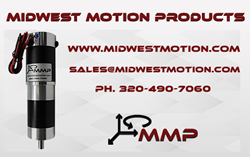SwRI develops robotic machine vision solution for shiny objects
Open-source ROS2 for intelligent parts reconstruction on display at Automate 2019 in Chicago
SAN ANTONIO — April 8, 2019 — Southwest Research Institute and ROS-Industrial developed a solution that enables industrial robots to scan and manipulate metallic objects that had previously been too "shiny" for machine vision to process.
The project integrates intelligent part reconstruction using the second generation of the Robot Operating System (ROS2) framework to improve 3D image perception when robots autonomously sand and finish parts. See a demonstration at SwRI's Booth No. 8214 at Automate in Chicago April 8-11.
"This is a great case study in the benefits and challenges of integrating ROS2 into industrial robotics," said Matt Robinson, an SwRI manager who supports ROS-Industrial. "It also shows how advanced perception algorithms can enable faster, more reliable scanning of metallic objects."
The ROS-Industrial consortia leverage ROS to create ROS-I, an industrial form of the open-source software used by major manufacturers around the world.
The latest ROS-I solution uses ROS2 to integrate cameras affixed to a robotic arm, collecting point cloud data at a high frame-rate to create a 3D output mesh that optimizes path planning. Machine vision cameras and algorithms have historically struggled to render accurate 3D images of metallic objects due to the "visual noise" that scatters off highly reflective surfaces. This significant challenge limits automation of welding and surface finishing processes in aerospace and automotive manufacturing.
SwRI, in collaboration with ROS-Industrial, overcomes this challenge by integrating truncated sign distance field algorithms that stitch together several images, or point clouds, at a higher rate. The solution uses TrajOpt, or trajectory optimization for motion planning, within the ROS-Industrial Scan-N-Plan framework, to enable real-time trajectory planning from 3D scan data.
Robinson said the project also underscores the benefits of a ROS-based approach, as this solution is hardware agnostic. The sensors and robot may be changed out with relatively little effort. ROS-Industrial, known for its open-source interoperability, provides manufacturers with standard software drivers for end effectors and fine-motor movement hardware that typically use earlier ROS software.
"This project was ultimately a successful bridge from ROS to ROS2," Robinson said. "But we know it's going to be a big task to move toward ROS2 as so many dependent packages and capabilities are still in ROS."
SwRI initiated the development of ROS-Industrial in 2012 through an SwRI internal research program conducted with industry collaborators. SwRI maintains the ROS-Industrial software repository and manages the ROS-Industrial Consortium.
The ROS-Industrial consortia — with branches in the Americas, Europe, and now Asia — provide cost-shared applied research and development for advanced factory automation. Consortia members drive new capabilities in ROS-I by championing focused technical projects based on their near-term automation requirements.
For more information, visit https://www.swri.org/robotics-engineering or https://rosindustrial.org.
------------------------------------------------
About SwRI:
SwRI is an independent, nonprofit, applied research and development organization based in San Antonio, Texas, with more than 2,600 employees and an annual research volume of more than $583 million. Southwest Research Institute and SwRI are registered marks in the U.S. Patent and Trademark Office. For more information, please visit www.swri.org.
Featured Product

Midwest Motion Products is a leading provider of robust and reliable Motion Control Products.
MMP specializes in supplying high-quality Brushed & Brushless DC Motors & Gearmotors for Robotics and Automation Equipment with a wide range of motor windings and gear ratios. With an impressive track record of more than 8,000 released DC Gearmotors designs and over 2,000,000 individual part numbers, we are renowned for our ability to handle large-scale orders. Due to our huge on-hand inventory, we are also well known for lightning-fast delivery of our standard products. We take pride in our dedicated customer service and our team of knowledgeable sales and engineering experts who are ready to assist you with custom design solutions tailored to your specific application. Additionally, we also offer a wide range of complimentary products, such as DC Motor Controls, DC Linear Actuators, AC-DC power Supplies, and DC Servo Amplifiers and others.
